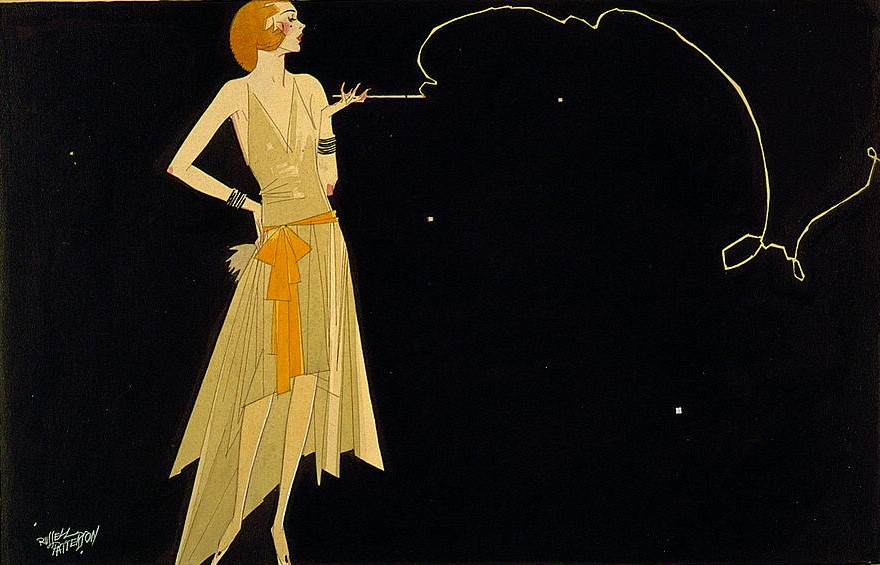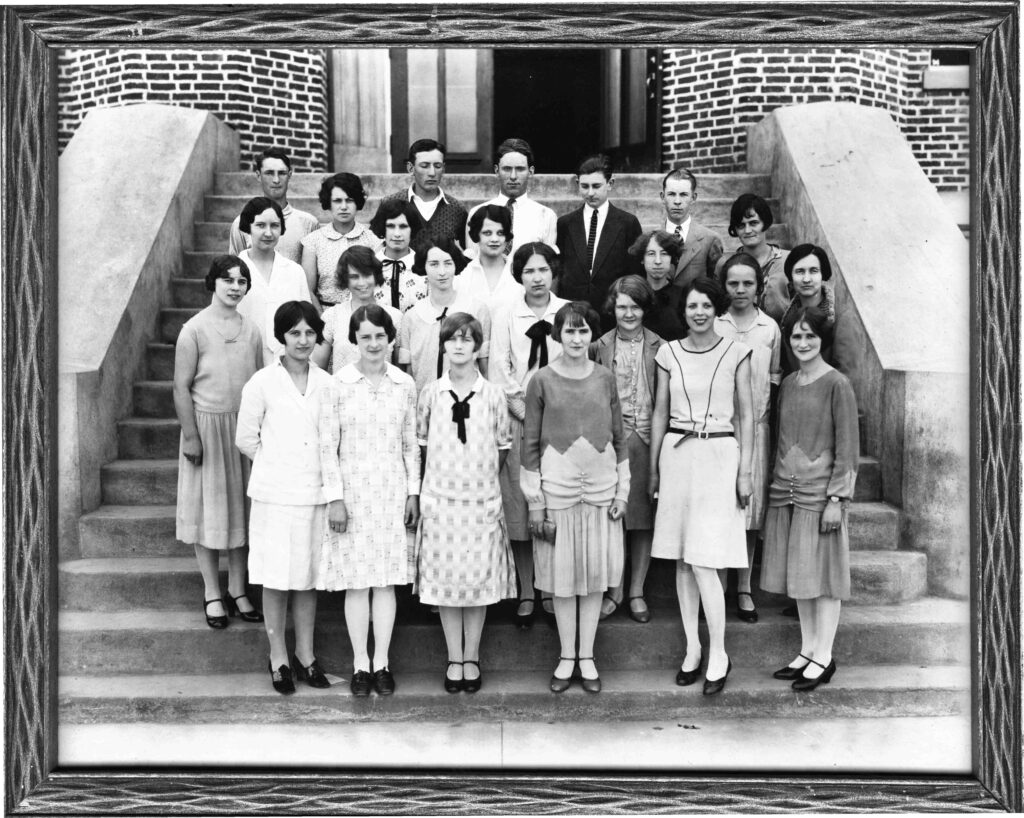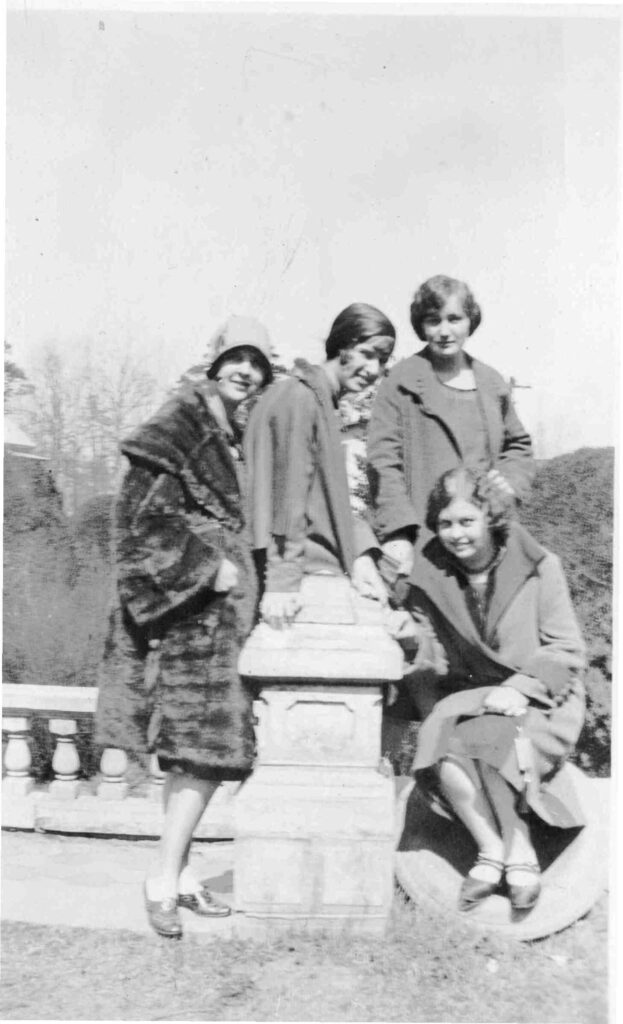
Adelaide Silversteen was seventeen years old when she spoke up and submitted her editorial on “the flapper” to the Brevard News, a precursor of the Transylvania Times. To give historical context, flapper was a term used to describe a fashionable young woman of the 1920s whose sense of style reflected a liberated way of thinking and living, in stark contrast to the staid Victorian era from which America was emerging.
Flappers were known for wearing short skirts (knee length was much shorter than the ankle-length attire before it), cutting their hair into the fashionable bobbed style, wearing makeup, drinking and smoking, driving automobiles, and otherwise flouting social norms. They were also known as “modern girls”, as the term flapper was derogatory and referred to the flapping of their arms during lively dancing to jazz music.
Older generations often criticized the fashionable young ladies of the day. In the joke column “Dots and Dashes by Dot” which appeared in the Brevard News in March 10, 1927 an excerpt quipped: “A Flapper I Know: Stockings, Eyes, Cigarettes, Words, Dice…She rolls her own, but the last named is the reason I’m broke.” The joke refers to flappers rolling their stockings down to expose their knees, rolling their eyes with their blasé attitudes, rolling cigarettes to smoke, rolling words – perhaps using their slang words, and rolling dice to gamble. The painted picture of the flapper is one of moral bankruptcy.

The Brevard News ran a March 17, 1927 contest to allow local school students to write editorials on a topic of their choice, and Adelaide’s editorial was one of the first published in the set. Perhaps it was in response to the prevailing attitudes about modern girls that Adelaide penned her letter. It is reproduced in its entirety here:
Is the Flapper Wrong? By Adelaide E. Silversteen
Shocking! Terrible! Absurd! Ridiculous! These are but a few of the exclamations used against the modern girl’s short dress, sleeveless, low-necked, and thin; her rolled hose, her scanty clothes. But we are soon to learn that the modern girl, wearing only enough clothes to “wad a shotgun,” is healthier, happier, and freer than girls have been in any other generation.
Extremes are bad in everything, yet Dr. Crusen a noted scientist, says that the modern girl’s dress is preventing tuberculosis and cancer in her generation to a marked degree.
It has been known that uncivilized tribes in South America and Africa wearing only a “sarong and a smile” have no deaths from tuberculosis or cancer. Why? The ultraviolet rays that come from the sun may strike the body directly. These rays have been discovered only in the last few years, and in their discovery was found a sure preventive (sic) and sometimes cure for the most dreaded diseases…cancer and tuberculosis.

and sometimes cure for the most dreaded diseases…cancer and tuberculosis.
Unfortunately, these violet (sic) rays cannot penetrate any form of glass, wood, metal, or cloth. I am not saying that we should revert to savage ways, but everyone should follow the example of the modern girl and wear fewer clothes, so we can receive some of these valuable violet rays. It is a proven fact that “these flappers,” as some yet persist in calling them, have decreased the number of deaths caused by tuberculosis because of their sheer and scanty clothes.
Tiny skirts, ultra waists, evening dresses often minus backs, sometimes worn above bare knees, make up the flapper’s wardrobe. Yet are these girls not better in their one-piece bathing suits and short skirts than our grandmothers were in their tightly laced waists measuring only a span or so, and their bustles, stays, and skirts that swept the streets, giving diseases to their wearer?
Yes, the modern girl dresses sanely and promotes health and cleanliness in her clothes. I ask you are these vivid girls not pretty…chic…attractive? We all answer, yes! Modern girls with sparkling youth, vitality, boundless, health abundant…all this and more. Would you want them to return to the styles of “mutton-leg” sleeves, laced waists, sweeping skirts—the styles where the young and old alike were swathed in an untold amount of uncomfortable clothing? You would not wish this on them, I am sure. Then no longer condemn their abbreviated clothing, for it is a blessing in disguise.

Perhaps it was a coincidence, but the following week’s issue of the Brevard News on March 24, 1927 reported on the PTO meeting and keynote speaker Dr. E.S. Buchanan, the county health officer, who mainly spoke on the efforts the county takes to prevent disease. Rather than prescribing fewer items of clothing to prevent tuberculosis, Dr. Buchanan oversaw water quality, tested susceptibility among school children, led health education, inspected public buildings, and periodically held treatment clinics. He highlighted the importance of the involvement of parents in the prevention of tuberculosis and public health in general.
Times never change, it seems; the young people will choose their own way of living and elder generations will shake their heads at the changes. Photographs and information for this column are provided by the Rowell Bosse North Carolina Room, Transylvania County Library. This article was written by Local History Librarian Laura Sperry. Sources available upon request. For more information, comments, or suggestions, contact NC Room staff at [email protected] or 828-884-1820.



